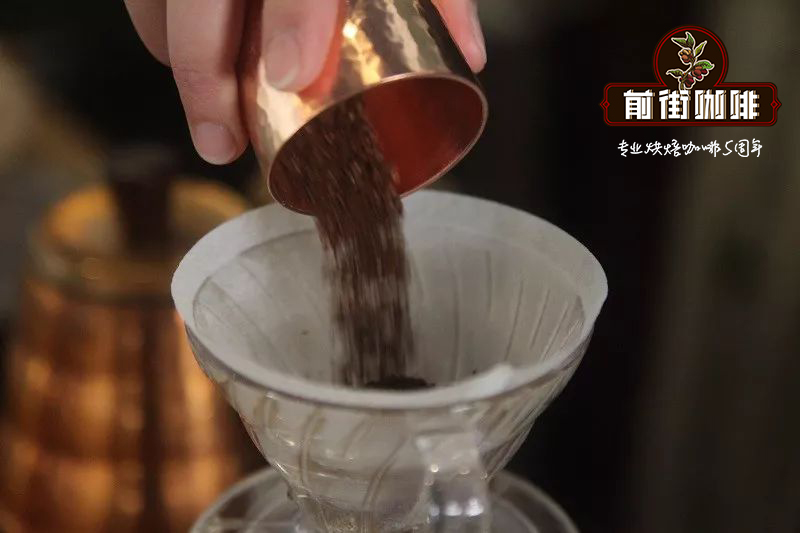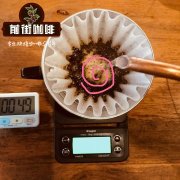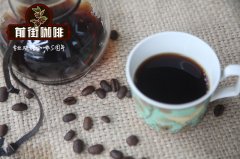How do I drink Hawaiian Kona coffee? Hawaiian kona coffee is expensive but has a unique flavor

Professional coffee knowledge exchange more coffee bean information please follow the coffee workshop (Wechat official account cafe_style)
It is mentioned that the flow rate of several commonly seen coffee filter cups is a very interesting result. Usually, when brewing coffee by hand, the brewing time is from fast to slow (from left to right), in order:
Hario V60 → Kono → Donut → Kalita → Melita
The speed of this extraction time is just a comparison, and there is no exact data, which makes us baristas itch, so we have to use a very stupid method to do experimental comparison. There are many kinds of filter cups, and the one in your hand may be Melitta,Kalita,KONO. Either way, each has its own characteristics, so how will these unique designs affect the taste of coffee?
In terms of material, the filter cup is made of resin, ceramic and copper. Most of the filter cups of resin are transparent, so it is easy to see the dripping state of coffee liquid during coffee extraction through the filter cup, and it is light and easy to carry.
The function of filter cup groove (rib):
When using the filter paper dripping method to brew coffee, the filter paper will stick to the wall of the filter cup. Without the grooves of these filter cups, after injecting hot water, the air can only be discharged from the filter hole at the bottom of the cup, and the remaining air will be discharged from the surface of the coffee powder in the steaming state. There is a hole in the surface of the coffee powder, and the cold air enters, so that the coffee will not be fully steamed. If you don't get enough steaming, the coffee will lose a certain flavor.
Therefore, the filter cup is extremely important. The filter cup must have a deep groove so that after the hot water is injected into the coffee powder, there is a gap between the filter paper and the filter cup to let the air out, so that the coffee can be fully steamed.
Everyone must have V60 conical large hole filter cup!
The bottom of the V-shaped filter cup is a large hole, and the filter paper used is a special conical filter paper. this kind of filter cup does not have the trouble that the filter hole is blocked, so it is suitable for coffee beans of various roasting degrees.
The conical filter cup can not only increase the concentration of water flow, but also make the coffee powder more concentrated. During the initial water injection and steaming, the coffee powder will be easier to absorb water evenly. But it also has shortcomings, its flow rate is relatively fast, easy to lack of extraction, need to inject water many times, and the requirement of steaming is relatively high.
V60 design features: perfect cone, whirlpool pattern, large round hole in the center.
1. Cone at an angle of 60 degrees: this prolongs the time for the water to flow through the coffee powder to the center.
2. A large filter hole: this allows us to control the flavor of coffee by changing the flow rate of water.
3. Spiral pattern: this allows air to escape upward from all around to maximize the expansion of coffee powder.
Extraction characteristics: the design of the filter cup pattern can make the flow velocity more uniform; but the flow in the groove of the filter cup is easy to gather, resulting in over-extraction of some coffee powder and insufficient extraction of some coffee powder; the design of the large round hole in the center can increase the flow rate and make up for the non-uniformity of extraction to a certain extent. Using Hario V60 filter cup requires some cooking skills and stability.
Japanese style technique with Kono filter cup
A closer look at the ribs of the KONO filter cup shows that the ribs of the KONO do not extend from the bottom to the top, but stop when they are less than half the height of the filter cup. This height is designed to ensure that during the dripping process, the filter paper can be attached to the wall of the filter cup after absorbing water, and once the exhaust space is limited, the air flow will be limited, which will increase the water absorption time of coffee powder particles.
This time I want to share two different taste extraction schemes with the same bean and different filter cups.
This Hawaiian kona coffee bean comes from Queen Farm, Queen's Farm. In 2009, he won the runner-up title in the 2011 Geberia (Hawaii KONA Review) Cup Grand Prix. 70% of the harvest there is the top premium boutique beans, and it is a farm known for its high quality.
Shallow roasted Kona mainly gets a balanced, warm, sweet nectar and elegant full taste. Brewing coffee exudes mulberry aroma that makes people feel sweet and happy. After a soft malt slips into the throat and exhales, it rushes on the throat again. It cools down like a cup of mulberry tea. People in the baking industry are amazed and full of praise! beans introduction: Hawaii KONA | Coffee workshop study room.
Baking degree: light and medium baking
Using bean grinder BARATZA BG grinding degree 4e (about small Fuji 4)
Filter cup one: Hario v60 transparent resin
Water temperature: 90 ℃
Inject 29g water for steaming, the time starts and the waiting time is 29s.
Then pour 128g of water into the powder bed and drop it by 1cm, so continue to inject water to 230g and wait for all the water in the filter cup to finish.
The total time is 1 minute and 50 seconds
Drink mugi-cha, nuts and flowers when it's hot.
When the temperature dropped to about 65 ℃, the flavor began to stand out: plum, mulberry, caramel, succulent.
Balanced taste, fresh flavor and harmonious taste
Filter cup 2: kono resin
Water temperature: 88 ℃
Inject 30g water for steaming time to start, wait for 31s and then water injection to 101g, wait for the water to drop to near powder, then circle with slow large water flow to 205g and wait for the filter cup to finish dripping.
Total time: 1 minute 55 seconds
When it is hot, the taste of turbid green tea is outstanding, and the flavor breaks out when the temperature drops a little.
Flavor: nutty
Taste: high tactile, full-bodied
The use of the KONO filter cup is mainly due to the slow launching speed to increase the soaking time of the coffee, because the roasting is shallow to avoid magnifying the tea or herbal flavor, and the rough water is injected slowly at a lower temperature to avoid messy taste, because the extract is less and the moisture ratio is shortened.
No matter how it is brewed, balanced or tactile, it is just to bring a cup that is more in line with each guest's type and closer to what they imagine.
4. Hawaii kona coffee bean grading system
Features: there is a saying that Blue Mountain is the king of coffee and KONA is after coffee. But relative to Blue Mountain, KONA is obviously not well-known in China, and there is no unified translation of the name, and there have been fraud scandals in the past, and it is not easy to buy in China.
Due to the island topography and volcanic soil, Hawaiian coffee has a very special taste, not too strong, not too sour and mellow, with pleasant wine aromas and acidity.
Classification: KONA coffee is divided into four grades, which are the most advanced Extra Fancy, Fancy, Prime and Gr. No.1 et al. However, due to low production and high production costs, with the increasing demand for boutique coffee in recent years, the price of Kona on the market is catching up with the Blue Mountains of Jamaica, and it is becoming more and more difficult to buy good Kona beans. " I will give it a try if I have a chance to go to Hawaii.
Hawaii kona coffee bean brand recommendation
The Hawaiian kona coffee beans baked on Qianjie Coffee are fully guaranteed in terms of brand and quality. And more importantly, the performance-to-price ratio is extremely high, a pack of 100 grams, the price is only 120 yuan. According to the calculation of 15 grams of powder per cup of coffee, a bag of coffee can make six cups of coffee, which costs only about 20 yuan per cup, which is recommended by conscience compared to the price sold in cafes for dozens of yuan a cup.
Important Notice :
前街咖啡 FrontStreet Coffee has moved to new addredd:
FrontStreet Coffee Address: 315,Donghua East Road,GuangZhou
Tel:020 38364473
- Prev

Correct teaching of Hawaiian kona coffee brewing method how much is a cup of Hawaiian kona coffee?
Professional coffee knowledge exchange more coffee bean information please follow the coffee workshop (Wechat official account cafe_style) Hawaii KONA kona coffee beans 01 | production profile in Hawaii (Hawaii) after nearly two centuries of efforts to grow coffee, the term Kona is almost synonymous with quality. But historically, since 1825, coffee trees
- Next

Isn't NO1 the best? Hawaiian coffee bean grading system introduces how much is Hawaiian round bean coffee
Professional coffee knowledge exchange more coffee bean information please pay attention to the coffee workshop (Wechat official account cafe_style) round beans commonly known as public beans, it is a variety of coffee beans, known in English as Peaberry, also known as caracoli. In fact, the round bean can be said to be a kind of defect in theory, and the reason for this kind of defect is usually caused by insects, including coffee before setting fruit.
Related
- Detailed explanation of Jadeite planting Land in Panamanian Jadeite Manor introduction to the grading system of Jadeite competitive bidding, Red bid, Green bid and Rose Summer
- Story of Coffee planting in Brenka region of Costa Rica Stonehenge Manor anaerobic heavy honey treatment of flavor mouth
- What's on the barrel of Blue Mountain Coffee beans?
- Can American coffee also pull flowers? How to use hot American style to pull out a good-looking pattern?
- Can you make a cold extract with coffee beans? What is the right proportion for cold-extracted coffee formula?
- Indonesian PWN Gold Mandrine Coffee Origin Features Flavor How to Chong? Mandolin coffee is American.
- A brief introduction to the flavor characteristics of Brazilian yellow bourbon coffee beans
- What is the effect of different water quality on the flavor of cold-extracted coffee? What kind of water is best for brewing coffee?
- Why do you think of Rose Summer whenever you mention Panamanian coffee?
- Introduction to the characteristics of authentic blue mountain coffee bean producing areas? What is the CIB Coffee Authority in Jamaica?

